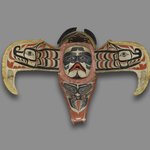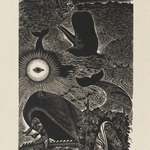Does the BKM have any more Pacific Coast American Indian Art on view? (Or in its collection?)

Yes, we do have other Kwakwaka'wakw (the tribal group from which the Baleen Whale Mask artist comes from) pieces in the museum, as well as pieces from other Northwest Coast Native American groups.
There are a few pieces in the Connecting Cultures exhibition that you are in right now: a "Dzunuk'wa Cannibal Woman Mask" in the far Southeastern corner and a Haida "Talking Man" mask right behind you. There are also many pieces in our "Life, Death, and Transformation" exhibition of the Arts of the Americas collection on the 5th floor. There, you can see a beautiful Transformation Mask that is also Kwakwaka'wakw, Heiltsuk house posts, Tlingit rattles, and more!
The mask is unique! It would be worn on the back of a dancer during potlatch ceremonies and the dancer would be able to move the mouth and flippers to imitate the movements of a baleen whale.
Is this Kwakiutl?
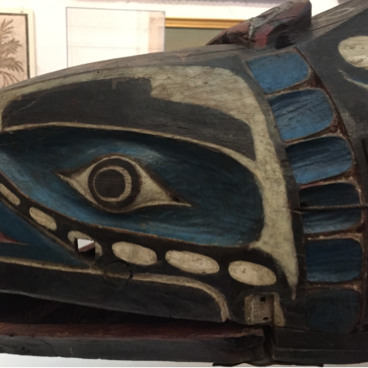
In a way, yes. It is actually Kwakwaka'wakw. Kwakiutl is an outdated term that no tribes use anymore.
This piece was collected from a Kwakwaka'wakw community in Knight's Inlet, British Columbia, Canada on a museum expedition by museum curator Stewart Culin in 1908 working with Charles Newcombe from the Vancouver Curio Shop. At that time, the group was labeled as Kwakiutl, but this was a misunderstanding and an attempt by early white settlers and anthropologists to transcribe the name of one tribe, the kwagu'l from Fort Rupert. "Kwakiutl," a garbled name for one subgroup of Kwakwaka'wakw people, became embedded in the anthropological literature through its use by noted anthropologist Franz Boas. Kwakwaka'wakw actually means "Kwak'wala speakers."
Where does this originate from?

That is from a Kwakwaka'wakw community in Knight's Inlet, British Columbia, Canada (somewhere near what is now Vancouver).
The community is home to many amazing carvers who have been making these types of masks for hundreds of years. Did you notice all the cables and pulleys that would help the dancer make it move? He would wear it on his back while he danced.
This mask is particularly interesting because the Kwakwaka'wakw are known for Killer Whale masks and this one is a Baleen whale, notice its long length and the small top fin.
What people had the privilege of wearing this mask?

The rights to wear and perform with any Northwest Coast masks are specific inherited rights passed down from one family’s generation to the next. Masks are privileges that are bestowed on both men and women because of their family heritage. From the time they are young, dancers will learn about the religious stories and importance of each mask. After proper initiations, they then have the right to perform wearing it.
The mask is worn along the dancer’s back while he imitates the swimming and diving of the whale by manipulating cords to move the flippers, tail, and jaw.
It would be worn in a community performance to reaffirm and validate the owner’s rights to their clan’s history and to honor their ancestors.
Young men and women would have to learn about their family heritage and go through initiations...they then have the right to perform wearing it.
What is the origin?

Masks are privileges to own and wear, they are bestowed on men and women because of their family heritage. From the time they are young, dancers learn about the religious stories and importance of each mask. After proper initiations, they then have the right to perform wearing it.
It is from a Kwakwaka'wakw community in Knight's Inlet, British Columbia, Canada (somewhere near what is now Vancouver).
What gender would wear this mask?
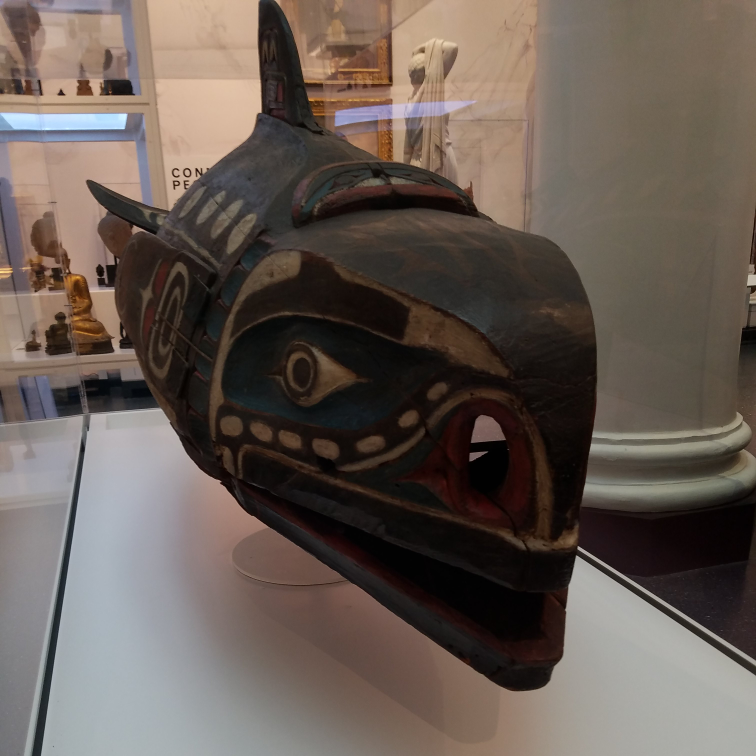
This Baleen Whale Mask by a Kwakwaka'wakw artist would likely be worn by a man during a potlatch ceremony.
Potlatches were elaborate feasts, usually held in the winter that included multiple ceremonies and gift-giving. They could range in size from small to great and included many activities: storytelling, dances, the assumption of chiefly name and position, the exchange of coppers, marriages, the erection of totem poles, the assumption of an art or dance privilege, and the buildings of houses.
Are there any reports of women wearing the mask?
That is an excellent question. Unfortunately, I don't know of any exceptions. This piece was collected very early by the museum (in 1908) and with most of the archival pictures I have seen of Kwakwaka'wakw whale dancers, it is always men wearing the mask. But I don't know if this was a steadfast rule. Also, I don't know if both men and women can now dance this role today.
Tell me more.

That's a lovely piece. It's actually a mask that would've been worn over the head and shoulders of the performer. The performer would have been able to manipulate the mouth, fins, and tails with his hands via strings, much like a puppet.
Is it very heavy?
Yes, the wood is quite solid. The performer would support the mask on their hunched back.
Can you tell me about these two works?
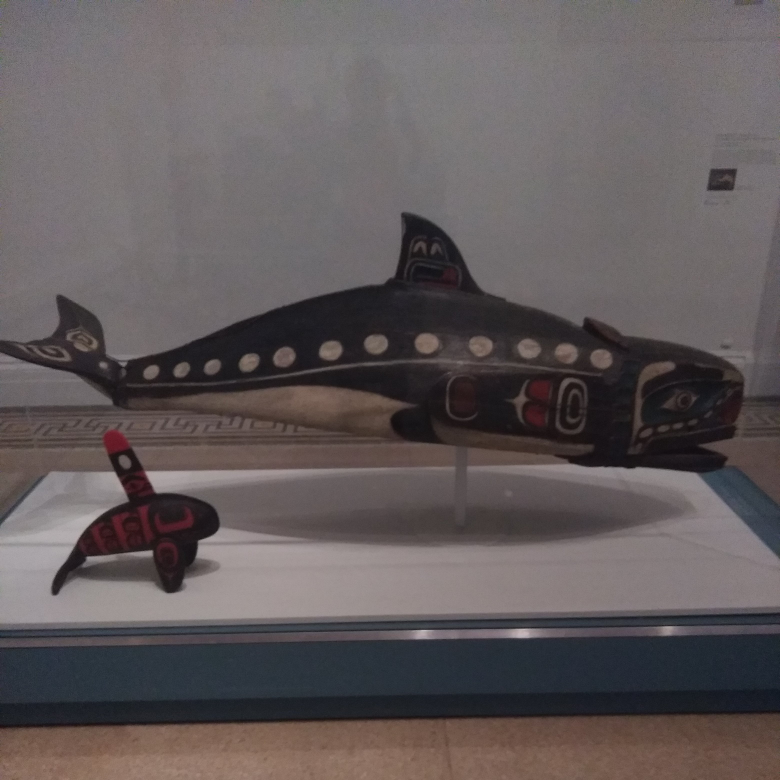
These two works show how in the present day, artists continue to bridge the gap between sacred tradition and contemporary innovation, expanding and enriching them both. The whale, featured in both works, is highly respected among the Kwakwaka'wakw and the Tlingit due to ancestral ties. You also see traditional form line design elements in both versions but the medium is drastically different. Some of the main differences are material. The “Baleen Whale Mask” is made of wood with mostly painted decoration and some carving while the “Guardian of the Sea” is made of layers of colored glass which has been sandcarved.




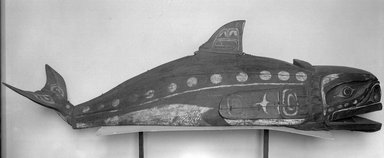

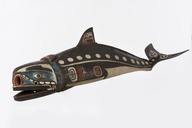














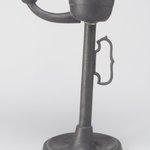


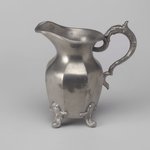





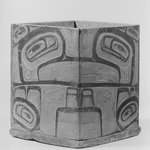
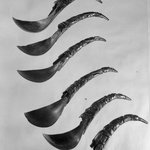
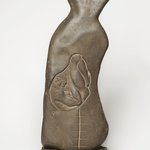






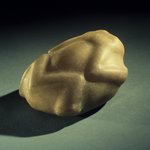




![Kachina Doll (Pakwen [Clown])](https://d1lfxha3ugu3d4.cloudfront.net/images/opencollection/objects/size2_sq/CUR.03.325.4606_front.jpg)
